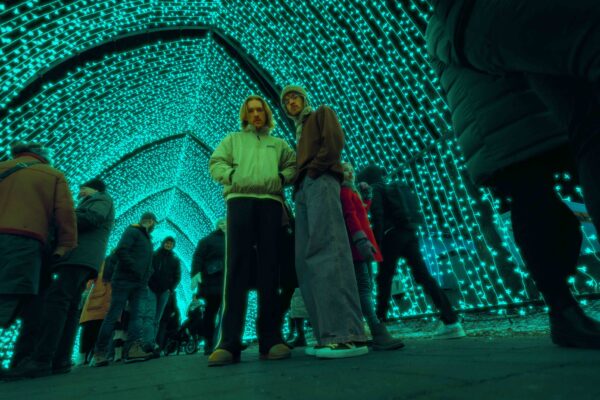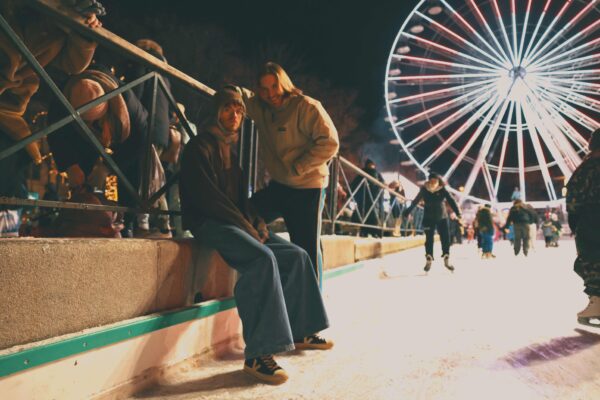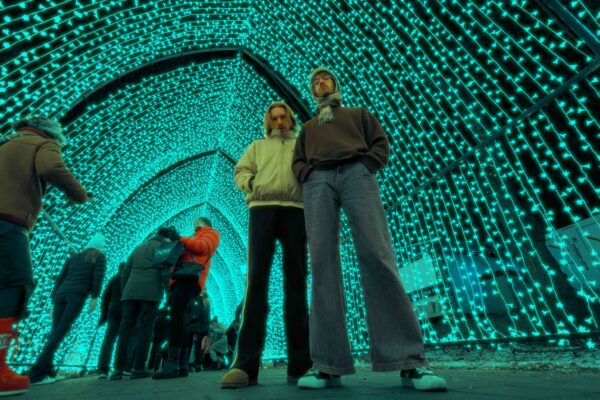We caught up with Why Kai ahead of their LP launch at Jaeger to talk about their debut album and the history of the project
Jazz and electronic music have been curious bedfellows in Norway. Artists like Bugge Wesseltoft, Nils Petter Molvæar and more recently Hilde Marie Holsen and Stain Balducci, have been exploring the borders of these genres. It has developed a rich history in the confluence of musical styles in the region in a way that is very uniquely Norwegian.
The latest addition to this legacy has been Why Kai, the solo project of session pianist, Jazz musician and club music enthusiast, Kai von der Lippe. Together with drummer Elias Tafjord, Why Kai has been a staple on club stages including Jaeger, and has recorded a few seminal EPs since establishing the project. At that convergence of the dance floor and Jazz, Why Kai lives closer to the loop-based phenomena that dominates club music, plying their craft in the physicalíty of their instruments.
Fingers dancing over keys while percussive elements permeate with transcendental grooves, Why Kai’s music is made from the technical ability of accomplished musicians but thrives on the dance floor. As a live band it’s as appealing as a visual spectacle as it entices in the sonic realm and for the few EPs they’ve released it’s something that they’ve echoed remarkably well in the recorded format.
They take this a step further with their debut LP, “The Tourist” with Kai enlisting the skills of Elias in a more dominant way in the recording process. It sounds like Why Kai performing in your living room, and some familiar songs from their live repertoire evoke images of the duo on stage through the record.
A sweeping narrative in sound transports the listener through songs and vignettes that relay some hidden plot through its 12 songs. Between keys and drums the tracks are instantly familiar if you’ve heard Why Kai on stage before. Leaving enough room for the pulse to take root, songs develop in organic, and often very technical ways that encourage deeper listening.
On a weekday in Oslo, we caught up with Kai and Elias in a cafe in Grünnerløkka to find out what lies beyond the obvious in their debut record and the history of the project ahead of the official launch of “The Tourist” at Jaeger.
Kai, you mentioned this is a solo project. However, the few times I’ve seen you play live as Why Kai, it’s always Elias on the drums. Is it still a solo project?
Kai: It has become more of a duo project, and then we sometimes play with a bigger band live, depending on the setting. On the recordings, it’s me making the music and Elias creating the drum parts, especially now on this album. It’s a blend of electronic drums and acoustic drums.
Elias: We always start with a base of electronic drums, but now we’ve started experimenting with acoustic drums. When we play live, I always use effects on the acoustic drums and combine those with the electronic drums.
Who programmes the electronic drums?
E: That’s Kai.
K: But the drums are important. Without the acoustic drums it would have been static.
E: It also makes it quite different from other electronic artists, because of the acoustic elements; like the drums and the piano.
There is something quite visually appealing to seeing somebody actually play the drums in the club setting.
K: It’s so visual and such a whole body experience.
You’re both quite accomplished musicians and you’ve obviously studied music at a high level. Is that how you met each other?
E: We actually found out that we’re from the same neighbourhood recently, but we only met at Foss, the music high-school. I think the teacher saw us as the Jazz guys. As we got older, we started dancing a lot together, going to Jaeger a lot on Tuesdays and Saturdays. We found we had this common love for electronic dance music.
Did you have a Jazz background before going to high school?
K: Both of us have parents who are Jazz musicians. I started with classical piano lessons and then moved from that to playing with a jazz teacher at Kulturskolen at Grønnland.
E: I grew up with my dad touring a lot when I was a kid. So, when my mom couldn’t handle me, I went on tour with my dad. He was a tuba player that played in this traditional world Jazz band.
K: You had the drummer of that band as your teacher.
E: Yes, and my teacher had the drummer before him as a teacher. I’m third in the line.
That’s a dynasty! What kind of Jazz were you exposed to at that early age?
E: I was more of a New Orleans traditional Jazz kind of a guy, because that’s the stuff my dad played. He was also involved with some African- and Asian musicians. It was a blend between world- and New Orleans Jazz.
K: The early stages, I was also a product of what my dad listened to and played. Which was the Bill Evans and Keith Jarret style of Jazz piano.
So, not too experimental?
K: No. When I started at high school I got into Bugge Wesseltoft and Nils Molvær and clubby jazz from the nineties here in Norway. When at university, that‘s when I really started experimenting with freeform Jazz, but that’s true for both of us I think.
E: My sister is also an electronic noise musician. Getting that from early on as well, put me on that path.
What brought you guys together and how did the solo project arrive?
K: We had another trio, playing club music. It was a collective thing and more showy.
E: It was almost like a rock show, with us going; “fuck you, we’re playing club music!” We had silver tights as costumes with hair and makeup. The other person was a raver/clubber, and we thought we had to make this music that we listen to all day.
It sounds a bit like LCD Soundsystem or !!!. Is that what you were listening to?
E: We hadn’t dived into those groups yet.
K: It was more like Techno and Deep House. When making this music it was a mix of the fact that we can play it, and it gets more show-based.
In terms of going from the three-piece to Why Kai, what was the major change in the music, besides the fact that you were missing one person.
K: I went abroad to Copenhagen to study, and they were very focussed on what is your sound, what’s your music. That’s when I started making this music, and that turned into the first EP. Coming back to Norway, I started thinking about how I would play it live. Unlike the other project which had the live element as the main focus, Why Kai was more about making a record, and then afterwards thinking about how we’re gonna play it live.
Why is this live aspect so important to you?
K: The whole project is about organic played music meets static electronic music. It’s very natural to play live with live musicians, and we come from playing live. We’re not so much studio rats.
E: We’re Jazz cats. (laughs)
Were there any particular objectives in creating a sound for Why Kai?
K: I listened to a lot of Norwegian composers that were not in the electronic music field. I saw similarities in some of their compositions and electronic club music, in the way they were built up. They’ll have a groove going, with interesting elements evolving on top. Most of the club music I listen to is very minimal, based on the loop. I wanted to bring the development of the compositions in Jazz to club music.
Not to disparage electronic music, but do you ever feel that you have to dumb it down a bit as accomplished Jazz musicians, or can you incorporate those more complex ideas from Jazz into this music?
E: Yes, of course. The whole harmonic and tonal world Why Kai moves in, is very influenced by Jazz. It might be a bit subjective, but I feel when you start a Jazz solo, it’s very much like Techno music; you have to build up a room. It’s the same principle in electronic music, that the audience can just sit there and enjoy the flow of energy.
K: Of course there are elements like playing situations to consider. If you’re playing late night between DJs, for example, you can’t have too many slow, low energy moments. We will compensate for that. And on the other hand if we’re playing for a Jazz festival to a sitting audience, then we’ll have to adapt the music again.
If the context of a Why Kai concert can go from a Jazz festival to a nightclub, is there a specific audience in mind when you’re creating the music?
E: No, but it’s for the dancing audience.
K: At the same time, I don’t want to tie myself down to one particular audience in the making of the music. I try to just follow what’s on my mind.
There is something to the recorded material that relays the way you sound as a live band. Is that a consideration when you approach the recording process and specifically something you had in mind for ”The Tourist”?
K: Yes, I usually make it without playing as a band. On this new album however we have some parts that were recorded as jams, that we chopped up afterwards. And then we’d improvise over that again. But most of the songs are based on a production setting.
E: What we did there was improvise around an idea. There were perhaps some boundaries. We’d probably used 20 seconds of 30 minutes of improvisation.
K: Most of the melodies, which were composed, were also born from improvisation.
Why an album and why now?
K: Because it was finished, I guess. (laughs) It was a long process. The music was composed over a year ago. We started a label for electronic music, so setting that up and learning that process happened at the same time.
Is it any different from the first EP, because it sounds like it was made around the same time as the EP?
K: Some of the tunes are a bit like the first EP, but then I wanted to move away from it too, so some of the tunes are quite different in my opinion.
Do you feel that you’ve found something with this album that perhaps wasn’t there at the start of the project?
K: I’m not entirely sure. What the project will be in the future, isn’t dependent on this album. What I wanted to create – and it’s the same for the first EP – is that I didn’t want to use too many electronic sounds, and if I use them, I want them blended with acoustic sounds. I would chop up improvised samples from bass or prepared guitar and make a groove from that to get that organic feel.
Do you find there’s always a kind of challenge in incorporating electronic sounds in acoustic environments and vice versa?
E: At least in the live format; to blend these things to get the way we wanted the sound to sound. They are sonically different and if something is wrong it takes so long to fix it, and it almost removes the original idea completely. It’s way different than just hitting a drum or a piano; where you’ll know what to expect.
I feel it started from a perspective where the acoustic sounds were the boss, and the electronic bits were added, but now it’s slowly turning. Electronic sounds are so much more piercing. The machine is the boss. At the same time I realised it’s us that have to make the pre-sequenced things groove, it’s not those things that make us groove.
What I really liked about the album was this narrative that follows through it including these little musical vignettes that bridge certain songs. What was the idea behind that?
K: I had this idea of the whole album going into one piece, so the groove never stops. The songs are at different tempos, so some of those “vignettes” are accelerating or decelerating.
E: We went into the studio with an idea, which is kind of bold, because you can always slow down a track in the production, but we actually played those with the click track going down in tempo and then there’s no turning back from that. Kai worked it out beforehand.
K: And, in some vignettes, speeding the tunes up after the recording. The tonality changes when you speed the song up. So, we had to calculate what that tonality would be in reference to the changing BPM.
E: There was a lot of maths going on.
Do you think alot about sound-design in the recording process?
K: Yes for sure. To some extent, to not get it to sound like a specific instrument. A lot of the melodic sounds are a mix of some synthesiser and a prepared piano.
Are there some other musicians present on the album, because at some stage I hear some double bass?
K: Yes I asked some friends that play bass to play these notes and do some weird improv sounds, and then I would chop it up afterwards.
E: The last single, “Creator of the Salt”, that’s that idea.
How do you translate that type of thing back into the live context again?
K: This is what we’ve had some problems with. In some sense many of those chopped sounds are the sound of the project. It’s pretty hard to replicate the same sort of idea live.
But it will still just be you two playing live at jaeger for the album release?
K: Yes, but for Jaeger, because of the club setting.





